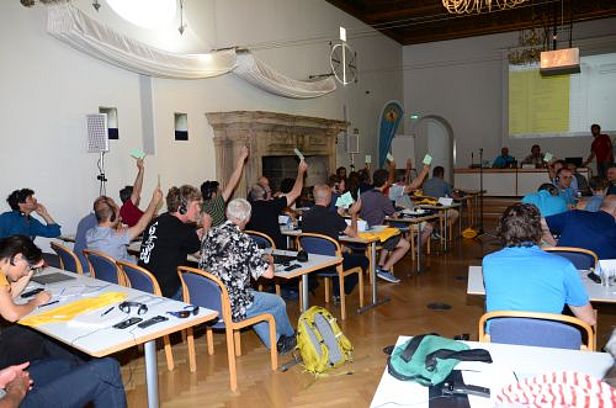25.7.2017 | News
The avalanche warning services operating in Europe have undertaken to develop common standards for their activities. Their General Assembly recently adopted a resolution to revise the designations of avalanche sizes.
Representatives of the European Avalanche Warning Services (EAWS) meet regularly to coordinate avalanche warning operations across national boundaries. The warning services of the European member countries – including Switzerland – gathered in Tutzing, Germany for their General Assembly from 12 to 15 June 2017. During the conference the EAWS defined guidelines governing votes and elections, which were accepted and signed by all 29 avalanche warning services from 16 countries. As a consequence, joint decisions can now be made and implemented more quickly.

A key resolution was adopted to change the designations for the range of avalanche sizes, which are to be introduced in the 2018/19 winter season. At present, avalanche bulletins refer to five sizes, namely very small, small, medium, large and very large avalanches. However, this classification does not necessarily reflect popular perception of avalanche sizes. Even avalanches currently classed as small, which include typical skier-triggered avalanches, can be up to 200 metres long and thus reach considerable size. They are capable of burying, injuring or even killing people. By devising new size classifications, the warning services are seeking to satisfy the demand for greater accuracy. The designation 'very small' is to be dropped. The new classification distinguishes between small, medium, large, very large and extreme avalanches; skier-triggered avalanches are to be designated 'medium'. The new designation for rare catastrophic avalanches is 'extreme'.
Facilitating interpretation of bulletins
The EAWS has also produced definitions for typical avalanche problems (e.g. new snow, wind-drifted snow etc.), and adopted guidelines for their use in avalanche bulletins. Standardised definitions should make it easier for those engaging in winter sports to understand and correctly interpret avalanche bulletins published in other European countries. The most far-reaching action taken by the EAWS to date was the introduction in 1994 of the uniform avalanche danger scale consisting of five levels, which remains in force today. In order to accomplish further standardisation, the EAWS has now established a Technical Advisory Board. It is to be chaired by Thomas Stucki, who also heads the avalanche warning service of the SLF. The board consists of eight members, some of whom supervise working groups as well. Their purpose is to address various topics, including best practice in avalanche forecasting. When the General Assembly next meets, in Norway in 2019, it will confer on the outcomes and next steps.
Contact
Copyright
WSL and SLF provide the artwork for imaging of press articles relating to this media release for free. Transferring and saving the images in image databases and saving of images by third parties is not allowed.